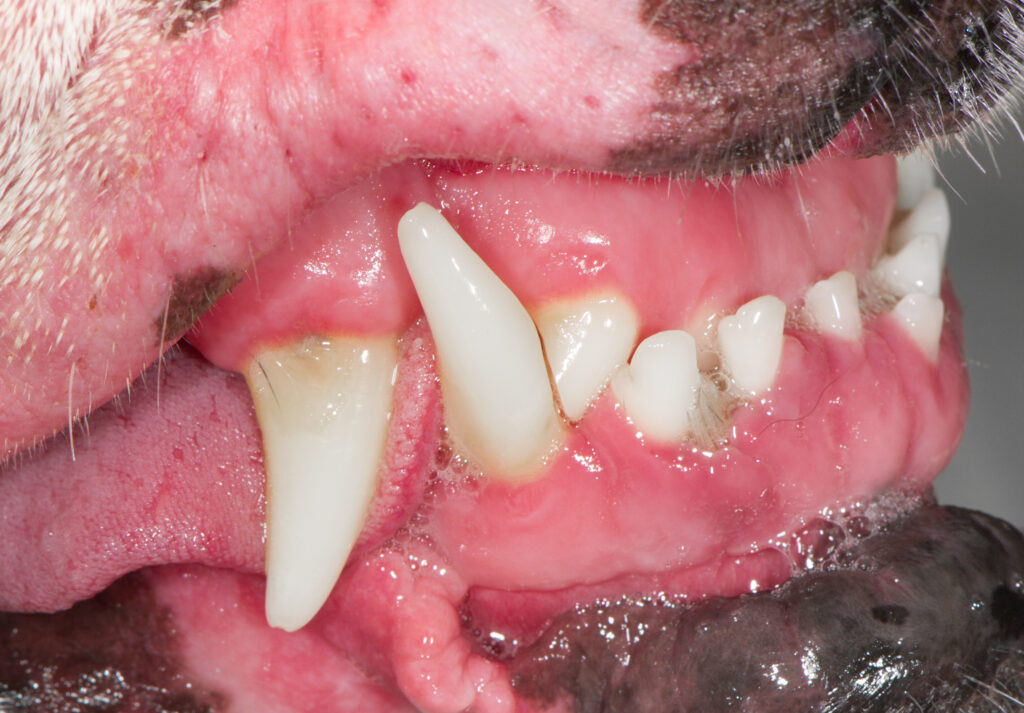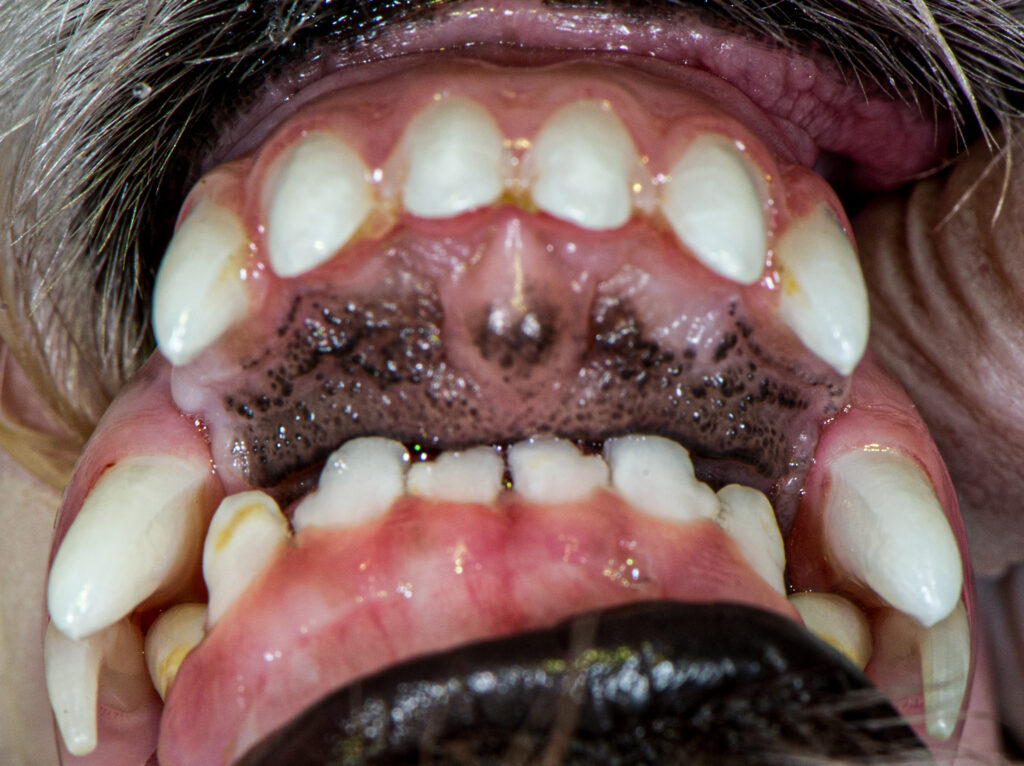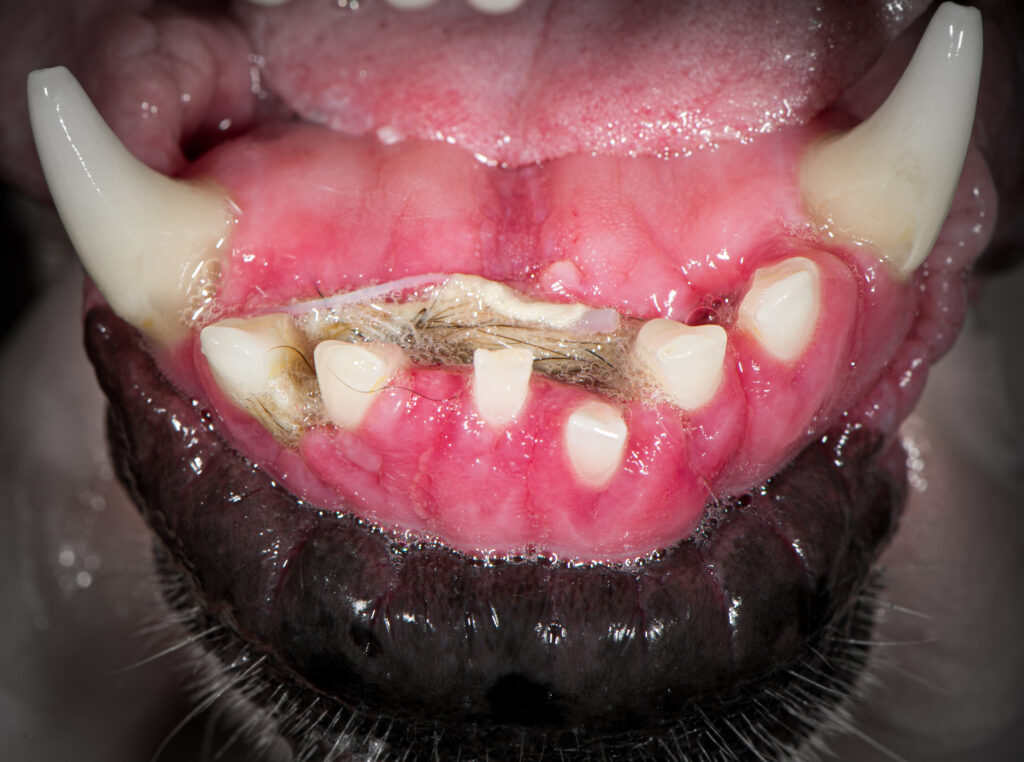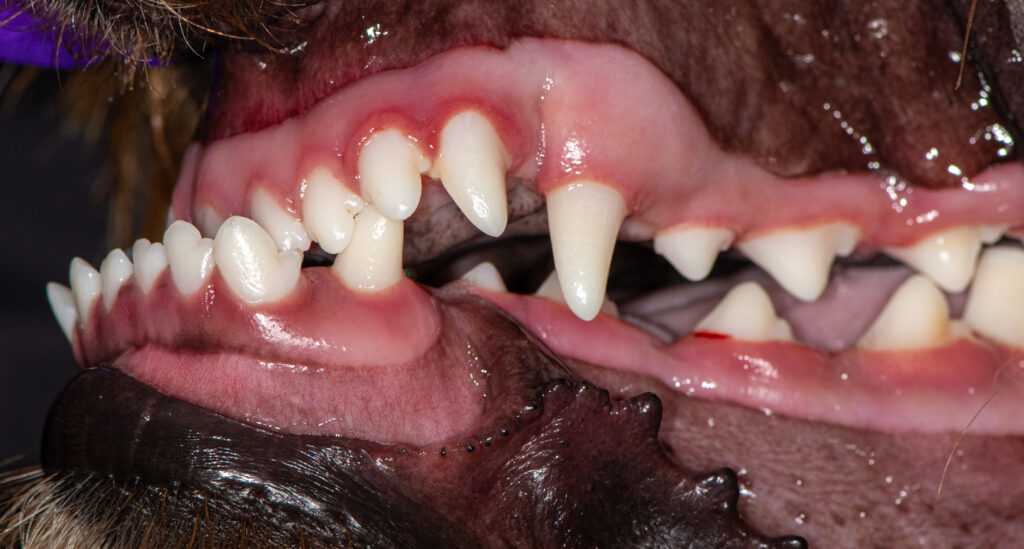
BOGO: buy a box of Longevity15 and get Yummy Combs free!
Shop now and get the BOGO deal today!
Joseph Roetheli, PhD
Have you ever seen a dog with an underbite, where the lower teeth stick out past the top teeth? Or maybe you’ve noticed a dog with an overbite, where the top teeth hang far over the bottom ones? These are both types of malocclusions, which means the teeth don’t line up the way they should.
As a veterinary dentist, I treat these kinds of bite problems often. Let’s take a closer look at underbites and overbites in dogs, what causes them, and when they need treatment.
What Is Malocclusion?
Malocclusion happens when a dog’s teeth don’t fit together properly. Some malocclusions are just cosmetic—they don’t hurt the dog. Others can cause pain, difficulty eating, or even damage to the mouth.
There are two main types of malocclusions that pet owners notice: underbite and overbite.
What Is an Underbite?

An underbite (also called “class 3 malocclusion”) happens when the lower jaw is longer than the upper jaw. This causes the lower front teeth to stick out.
Some breeds, like Bulldogs, Boxers, Shih Tzus, and Pekingese, are supposed to have an underbite. In those dogs, it’s normal. But in other breeds, an underbite can cause problems, especially if the lower teeth hit the roof of the mouth or gums.
What Is an Overbite?

An overbite (also called “class 2 malocclusion”) is when the upper jaw is longer than the lower jaw. This causes the top front teeth to stick out. If the lower teeth poke into the roof of the mouth, it can be very painful. The dog may have trouble closing their mouth, chewing, or even breathing.

What Causes These Bite Problems?
Most of the time, malocclusion is genetic—it runs in families. Puppy teeth that fall out too late, baby teeth that stick around, or injuries to the mouth can also cause problems. In some cases, a misaligned jaw can affect the way adult teeth come in.

When Does a Malocclusion Need Treatment?
Not every underbite or overbite needs to be fixed. If the dog can eat, close their mouth, and isn’t in pain, we may just monitor the bite as they grow.
But if the teeth are damaging the soft tissues, poking into the gums, or interfering with chewing, treatment is necessary. This might involve removing certain teeth or using special dental appliances.
What Can Be Done?
Depending on the case, a veterinary dentist may:
The goal is always the same: to keep your dog comfortable, functional, and pain-free.
To find a board-certified veterinary dentist log on to AVDC.org
Final Thoughts
Underbites and overbites are common in dogs and aren’t always a problem. But when they cause pain or injury, they need to be treated. If you notice your puppy’s teeth aren’t lining up right, talk to your vet early—it’s easier to treat problems while the mouth is still growing.
Updates, coupons, deals, and more!
Type anything...
We use cookies to provide you the best possible experience on our website. You consent to the usage of cookies by continuing to view our website. See our Privacy Notice for more information.